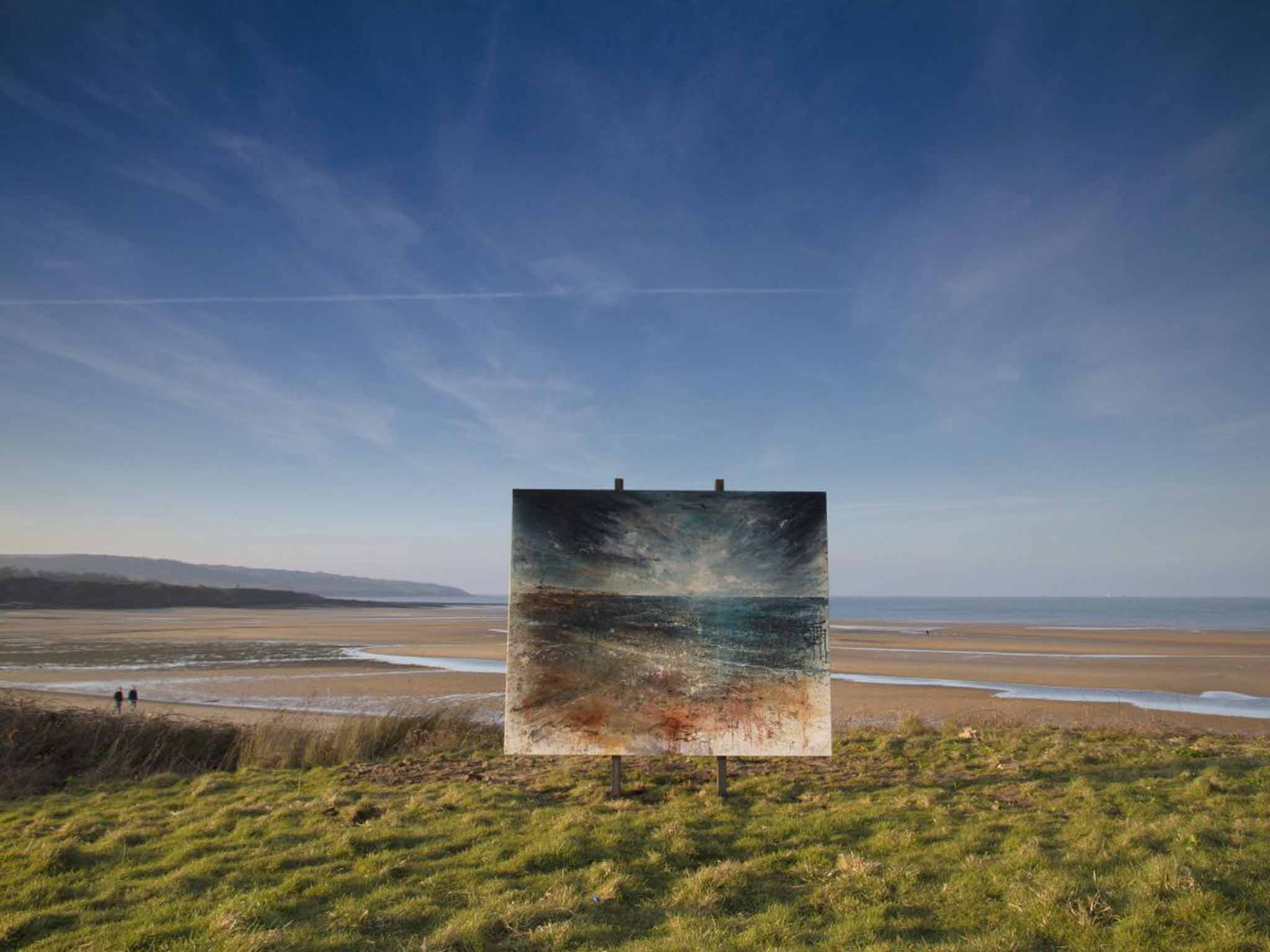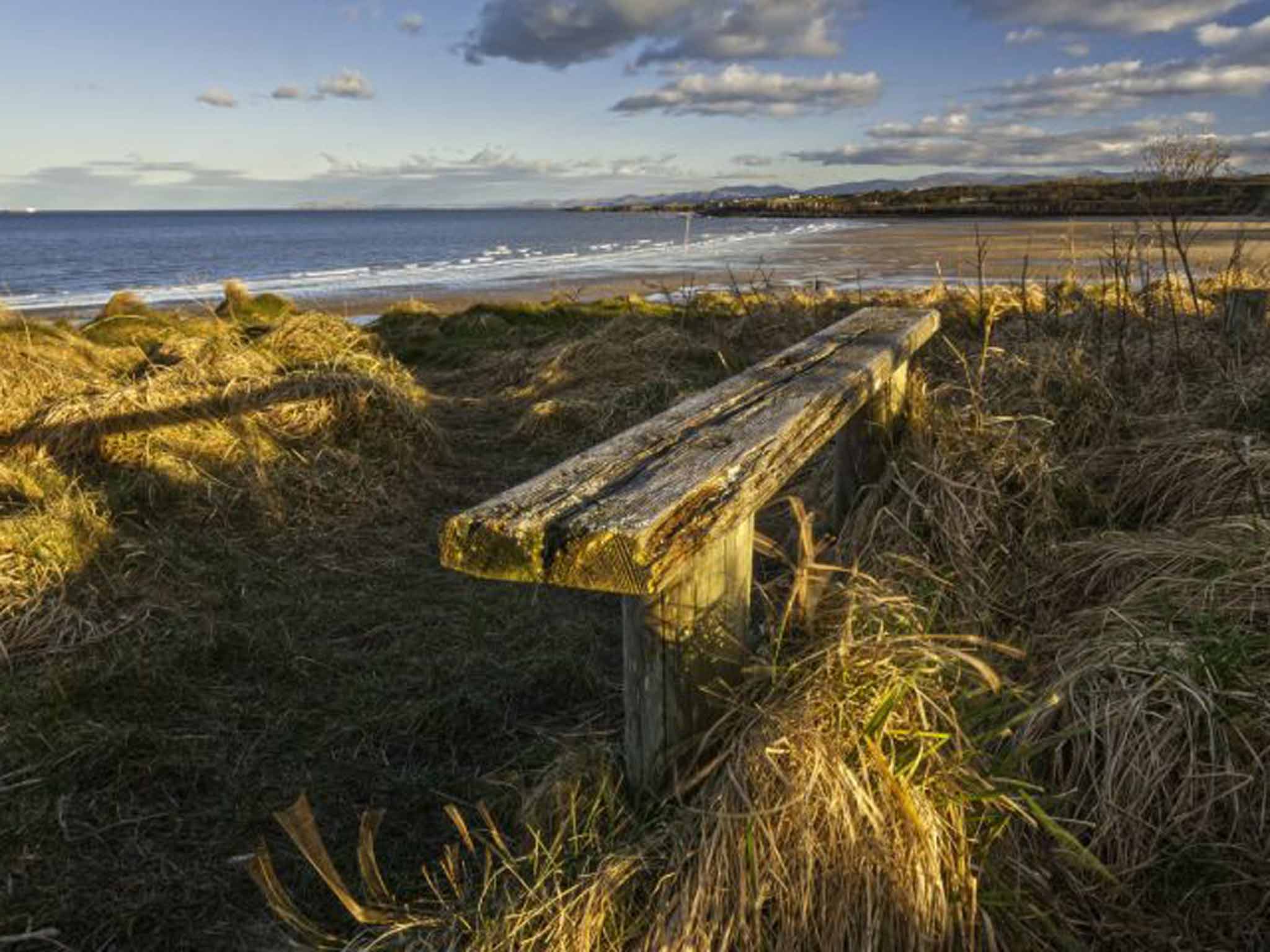Anglesey's wild art: A new outdoor installation on the Welsh island
The island's landscapes have been captured from four angles. Mark Rowe laces his hiking boots and takes a close-up view

Your support helps us to tell the story
From reproductive rights to climate change to Big Tech, The Independent is on the ground when the story is developing. Whether it's investigating the financials of Elon Musk's pro-Trump PAC or producing our latest documentary, 'The A Word', which shines a light on the American women fighting for reproductive rights, we know how important it is to parse out the facts from the messaging.
At such a critical moment in US history, we need reporters on the ground. Your donation allows us to keep sending journalists to speak to both sides of the story.
The Independent is trusted by Americans across the entire political spectrum. And unlike many other quality news outlets, we choose not to lock Americans out of our reporting and analysis with paywalls. We believe quality journalism should be available to everyone, paid for by those who can afford it.
Your support makes all the difference."Four on Anglesey" sounds suspiciously like an Enid Blyton tale of smuggling, clever-clogs kids and of course ginger beer. On balance, as I stand on a headland near Penmon Priory, I prefer the landscape painter Anthony Garratt's take. His Four on Anglesey comprises four large, open-air canvas portraits of the island that will spend the summer competing with the elements of north Wales.
The paintings face the four compass points, and here at Penmon's thrilling headland, I come across his eastern view of the seascape. Garratt hasn't tried to be too clever or abstract – there's no wondering what you are supposed to be looking at. Both canvas and real life show a black and white lighthouse; ships at anchor awaiting a pilot to guide them to the docks of Liverpool; white horses fluttering across the surface. There's a touch of Jackson Pollock to this painting – the result, I later learn from Garratt, of the need to work in the elements with less finesse than might be the case in a studio, where hailstorms tend not to be an issue. The wild scene he has captured is reinforced by the mournful, metronomic clanging of the lighthouse.
I'm struck in a similar way by Garratt's second painting, up at the coast at Lligwy Bay, where the dark blue of the sea merges with a looming, expanding white cloud that gently fills in the sky. In the background is Ynys Dulas, an island once stocked with food and water to aid the survivors of ships wrecked by this treacherous coastline. Low tide unveils a vast sandy beach, depicted in coppers and bronzes by Garratt, along with specks and flecks of gorse and rocks smothered in bladderwack.
The hazy blend of colours in the painting gently echoes Anglesey's extraordinary geology, a hotpot of pre-Cambrian rocks and glacial drift. To the north the rocks are red, formed from an ancient desert river, while to the east and south they are shiny white, limestone remnants from a tropical sea.
"It's a different dynamic," Garratt explains later, at his studio on Bristol's Jamaica Street. "Usually you see a landscape painting in a gallery, with a white wall, with lots of people around, who have all elected to go there, to see a painting. That makes it far removed from the experience of seeing the landscape. This way, it takes you by surprise, people just stumble across the paintings, and that's a very different approach to looking at a painting." To this end, there is no interpretation of the painting adjacent to the canvas, nothing to distract you.
All the canvases are 2.5m square and bolted fast to rusting steel easels. Over the coming months they will be weathered, battered and worked by the elements into the landscape they depict. Although large, they are no thicker than the width of a finger but Garratt is confident they will last comfortably into the autumn since the canvas is made of a tough marine ply, well suited to withstanding gales, and coated with a marine resin for good measure.

The third painting looks and depicts south – across the Menai Strait towards Snowdonia, with Caernarfon Castle tucked at the base of the abrupt foothills – and represents what is arguably Anglesey's signature view. This work pays homage to an even larger work of art by John Brett that hangs in the National Museum of Wales in Cardiff, and I'm struck by how Garratt captures the way the landscape here falls away into folds and dips; it's as though he's frozen the curvature of the earth. I'm accompanied by Bun Matthews, owner of Menai Holiday Cottages, who is the driving force behind the project. "We went on a road trip around the island looking at potential spots," she says. "There's a historical tradition of artists taking a tour and drawing what they see, and Anthony is a man who gets energy from the weather, especially big weather.
"This is about bringing people to Anglesey in a different way. There's a lot of active things to do here – zip wires, high-speed boat trips – but this is a chance to stand, sit and stare." Garratt created a similar series on Tresco in the Isles of Scilly last summer.
The fourth picture is tucked away, in a walled garden to the west at Rhoscolyn Bay. To reach it, I cross Four Mile Bridge onto Holy Island – which is in reality barely 100 yards long and named for the fact it stands just four miles from Holyhead. The painting, which stands in front of a limestone wall, is arguably the most abstract, least literal of the four works.
The four landscapes prove to be a good way to see what Anglesey's outdoors has to offer the visitor. This is an island of shining, glistening stones: a combination of the narrow lanes and island light of the Scillies with the big skies of Northumberland, and the high dry-stone walls that run between lines of woods. All the pictures are on the coastal path. So, from Rhoscolyn, I take a short hike along it with Eurwyn Williams who runs Anglesey Walking Holidays.
The path represents an undulating, crenulated contrast to the low-lying flat valleys of Anglesey's interior. We pass Bwa Gwyn, a sea arch of fractured quartzite; oystercatchers pipe overhead; there are moodily atmospheric coves and sweeping, sheep-munched greens of coastal grasses. On a clear day you can pick out Ireland. All the colours, moods and mystery, in fact, that Garratt manages to capture in his paintings.
"People like to come and walk here," explains Eurwyn, "they're drawn by the idea of walking around the island. Every day has three or four 'wow' moments – a Neolithic tomb, bird spotting, an old church."
The pictures will stay in place until October. One will then be auctioned to fund a bursary for art students on Anglesey, an island that has pockets of high deprivation. "There's a strong tradition of landscape painting on the island," says Garratt, "it would be nice to revive that. The light is different on an island, you see the streaks of rain coming towards you. The weather changes, you get little micro-climates."
Travel essentials
More information on the paintings: menaiholidays.co.uk/fouronanglesey
Anthony Garratt: agarratt.com
Menai Holiday Cottages: menaiholidays.co.uk/home
Anglesey Walking Holidays: angleseywalkingholidays.com
Wales Walking Holidays: waleswalkingholidays.com
Join our commenting forum
Join thought-provoking conversations, follow other Independent readers and see their replies
Comments